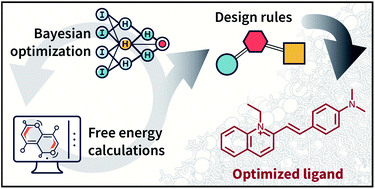A focus on simulation and machine learning as complementary tools for chemical space navigation
Abstract
Computer-aided molecular design benefits from the integration of two complementary approaches: machine learning and first-principles simulation. Mohr et al. (B. Mohr, K. Shmilovich, I. S. Kleinwächter, D. Schneider, A. L. Ferguson and T. Bereau, Chem. Sci., 2022, 13, 4498–4511, https://pubs.rsc.org/en/content/articlelanding/2022/sc/d2sc00116k) demonstrated the discovery of a cardiolipin-selective molecule via the combination of coarse-grained molecular dynamics, alchemical free energy calculations, Bayesian optimization and interpretable regression to reveal design principles.

- This article is part of the themed collection: Chemical Science Focus Articles, 2024

 Please wait while we load your content...
Please wait while we load your content...